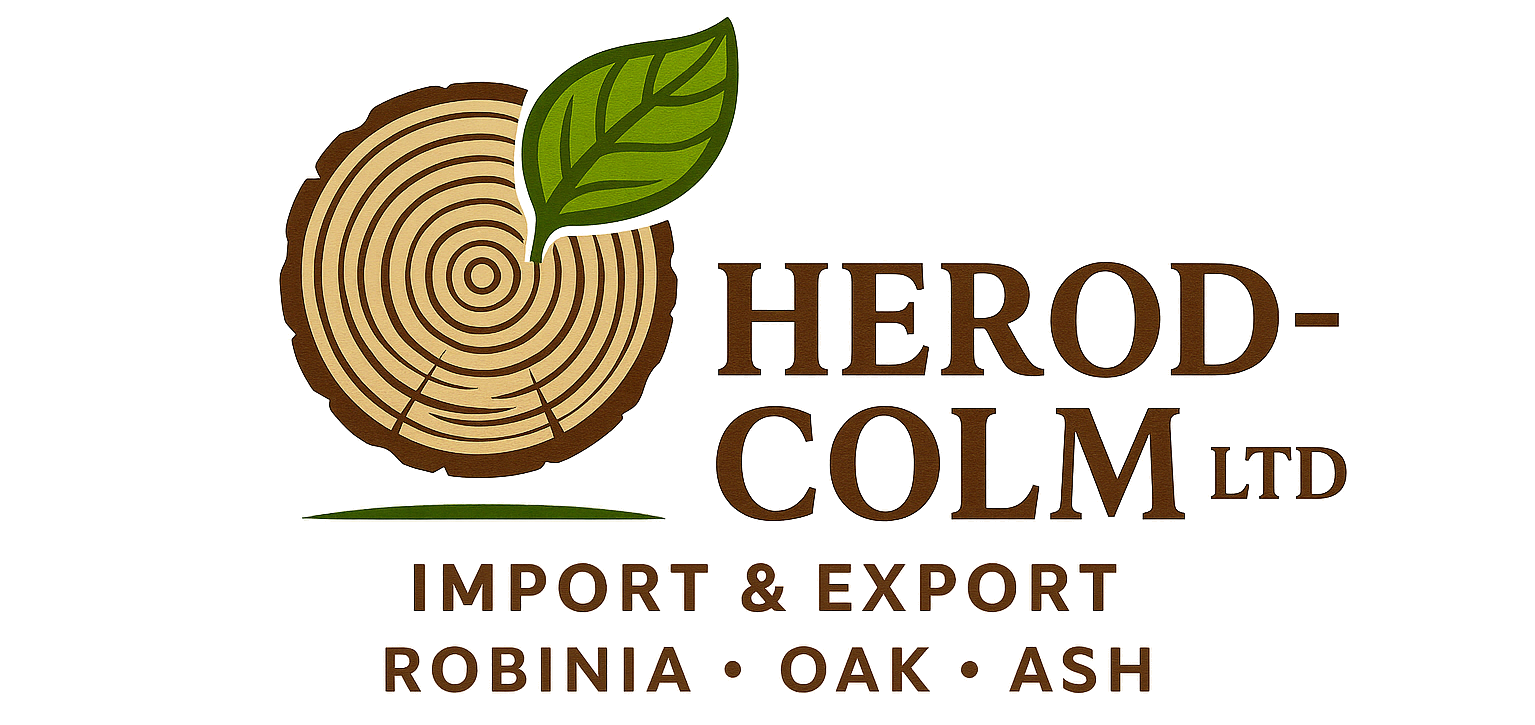Introduction
Table of Contents
ToggleOaks have always been among the most valued hardwood species in Europe, with their strength, beauty, and durability making them essential for furniture, flooring, construction, and barrel-making. Two of the most important species are Quercus robur, commonly called Pedunculate Oak or English Oak, and Quercus petraea, known as Sessile Oak. Though closely related and often growing side by side, they show distinct differences in morphology, ecology, and wood properties. Understanding these differences is crucial for forestry, woodworking, and timber trade.
Botanical and Morphological Differences
Quercus robur (Pedunculate Oak)
- Leaves: Short petioles (2–7 mm). Deep lobes, often with auricles (small “ears”) at the leaf base.
- Acorns: Attached to long stalks (peduncles), usually 2–7 cm long.
- Crown: Broad, spreading crown with massive lower branches.
- Growth Sites: Prefers lowlands, rich soils, and more humid conditions.
Quercus petraea (Sessile Oak)
- Leaves: Longer petioles (10–20 mm). Lobes less deep, and no auricles at the base.
- Acorns: Sessile, meaning they grow directly on the twig without peduncles.
- Crown: More upright and regular, with straighter branches.
- Growth Sites: Prefers hillsides, poorer and drier soils, and higher elevations.
Wood Properties and Uses
Both species produce heavy, durable hardwood that is highly valued in Europe, but there are subtle differences:
- Quercus robur wood: Slightly coarser grain, often with more knots due to its branchy growth. Used for construction, flooring, shipbuilding, and furniture.
- Quercus petraea wood: Finer grain, more uniform texture, and higher tannin content. Particularly appreciated in cooperage (barrel-making for wine and spirits), where its tight grain ensures less leakage and imparts flavor.
Ecological Role
- Quercus robur thrives in nutrient-rich lowlands and floodplains, supporting diverse ecosystems.
- Quercus petraea is better adapted to poorer soils and mountainous regions, playing a role in biodiversity where other species struggle.
Identification in the Field
To distinguish them:
- Look at leaf stalks: short in Q. robur, long in Q. petraea.
- Check acorns: stalked in Q. robur, sessile in Q. petraea.
- Observe the habitat: moist lowlands point to Q. robur, while dry uplands suggest Q. petraea.
Conclusion
While Quercus robur and Quercus petraea share many similarities, their differences in morphology, habitat preference, and wood quality make them unique in forestry and trade. Timber buyers, woodworkers, and foresters benefit from recognizing these nuances to ensure the right species is selected for the right purpose. Together, these two oaks remain cornerstones of European hardwood production and natural heritage.
